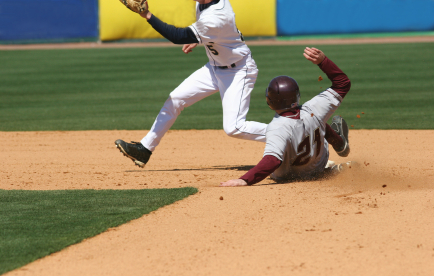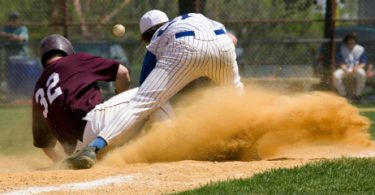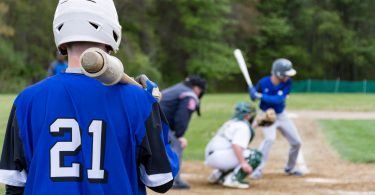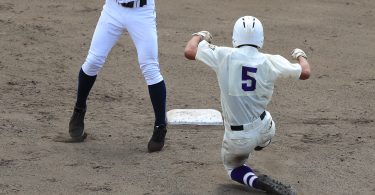The Situation:
There are runners on 1st and 2nd with 1 out in the bottom of the 5th inning of a 3-3 tie. There’s a 1-1 count on the big 5-hole hitter and average speed on the base paths.
The Play:
The pitcher delivers a looping curveball that lights up the right-handed hitters eyes. He swings and ropes a line drive up the middle. The shortstop breaks two steps to his left and dives. He snares the ball on a short-hop—a beautiful grab! He fumbles with the ball before finally getting rid of it to the second baseman covering for the double play turn.
The second baseman knows he will have to hurry to have any shot at turning two. He arrives to the back of the bag with his left foot and positions himself to receive the ball with his bare hand and throw without moving his feet. He can practically smell the web gem! The second baseman has the bag to protect him from the incoming slide and the flip is coming in perfectly at shoulder height. As the ball arrives, the he starts to turn his head and attention to making the throw to first. As he pulls his head, he misjudges the ball slightly. It deflects out of his fingers and falls to the ground.
The Outcome:
The second baseman recovers the ball with his left foot on the bag, but his efforts are too late. All the runners are safe and the diving play has been wasted.
What Went Wrong:
We see Web Gems like this on MLB Tonight and the pros make them look so easy! In reality, we know there’s nothing easy about them. We don’t want to shut down creativity, but learning to think the game means learning how to balance risk and reward and when you should take a chance on making these types of plays.
The second baseman knows he will be rushed and must have everything go perfectly to turn the double play with a bare-handed grab. He has actually done a great job of judging the play and is correct that turning two would require a near super-human effort. What he forgets in the moment is two major keys to winning at any level—staying out of the big inning (damage control) and not giving an offense extra outs or bases (making the routine play). By securing the out at second, the tie is preserved and the offense will still need a positive outcome in the next at bat to take the lead.
There was nothing routine about the diving stop, which is a run-saving bonus, but the flip to the second baseman was routine. This is the out that the defense must have! Rather than use his glove and a normal transfer to make the throw to first or turn himself into a first baseman to ensure the first out, the second baseman gets caught up in the moment. Great plays are exciting and certainly help a team win, but more often than not, success comes from making the routine plays and taking outs where they are given. Once the shortstop turned the great play into a routine out, the second baseman would have been better off to think the game, play the percentages, and ensure the out at second. Good thing you can learn from his mistakes!







